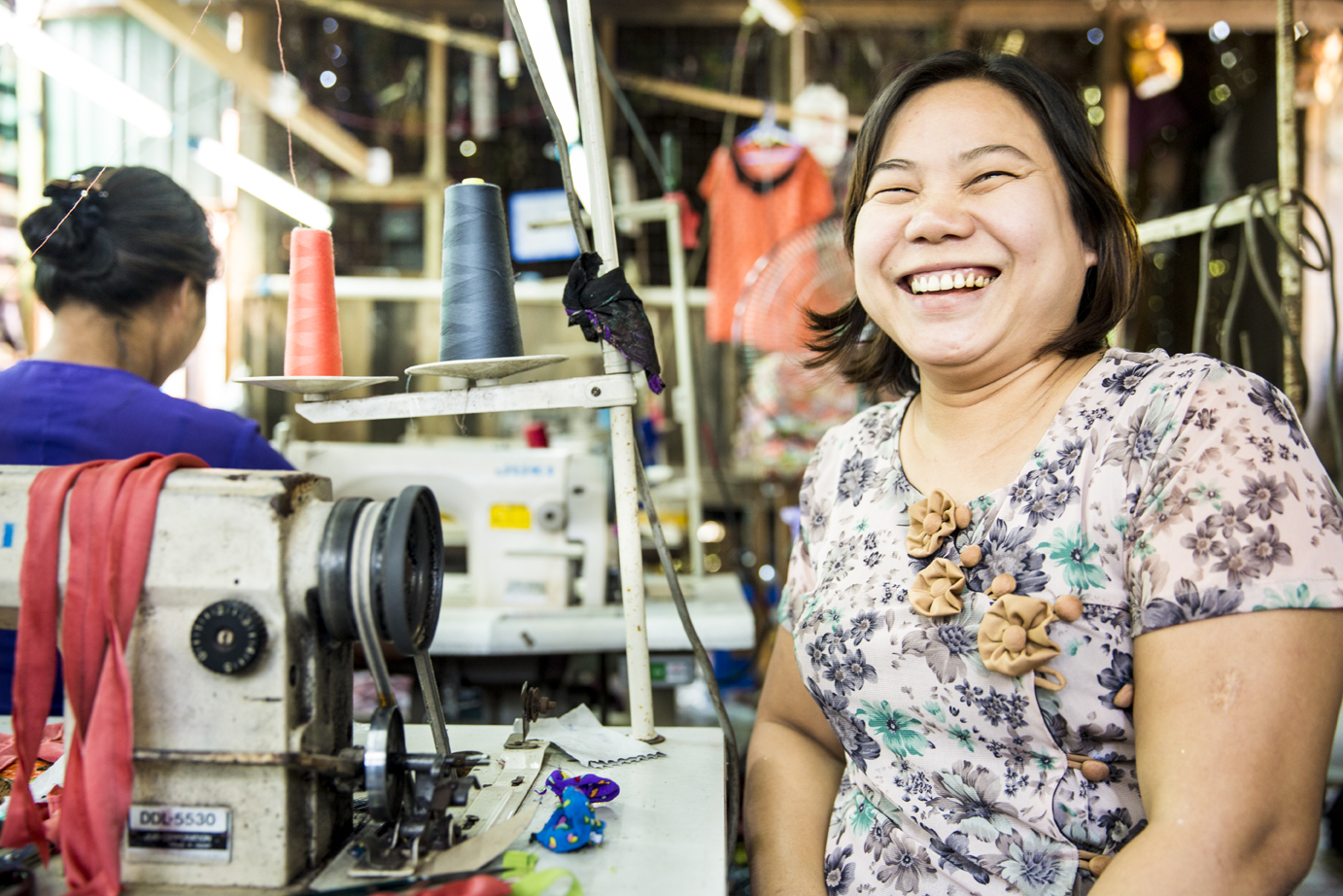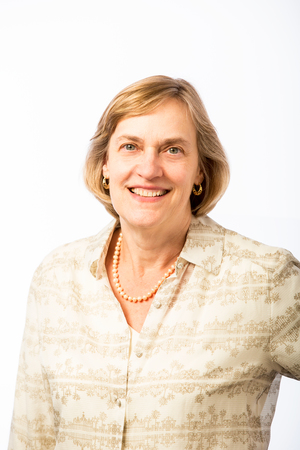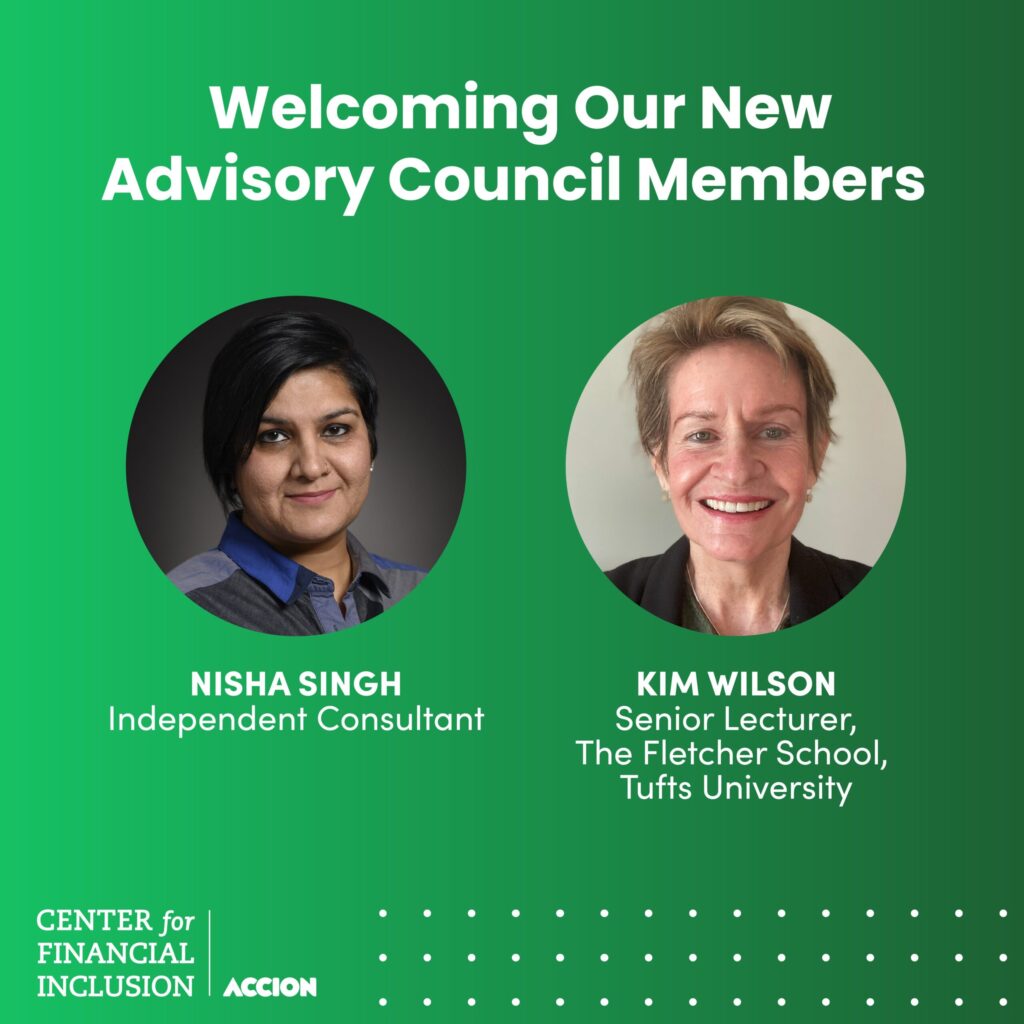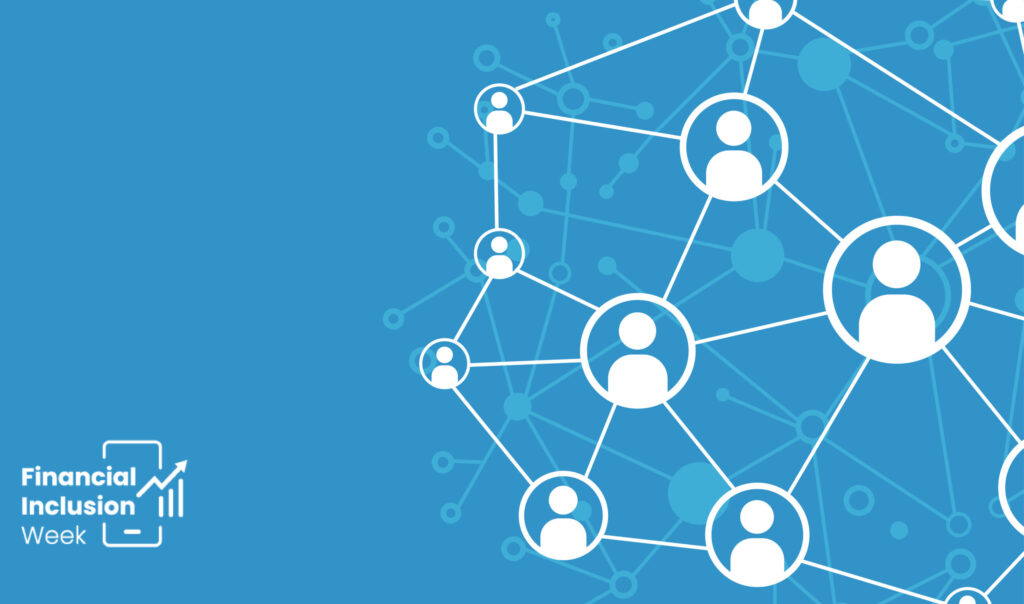
Topic
Imagine that low and moderate income consumers created the financial services of their dreams. How would they describe what they want from their financial services? Would the description resemble the services they actually receive?
Since 2008, the Center for Financial Inclusion at Accion has explored the customer perspective in financial inclusion by conducting research and engaging with financial service providers and their customers in dozens of countries. Through our research, we have been privileged to talk with people across the globe who are new to formal financial services, and with organizations serving them. Insights gleaned from our interactions with clients constitute a roadmap of sorts on how to “get financial inclusion right.” They point the way along the long road the sector must travel before the vision of meaningful financial inclusion is realized.
As it moves into its second decade, CFI intends to dedicate itself to search out and promote the elements of financial inclusion that bring customers what they truly need and want. With that in mind, this essay reflects on some of the findings about customers gleaned from a decade of CFI research.
Customer wishes are actually pretty simple, whether customers are poor or not and whether they live in frontier, emerging or high income markets. First, they want services that help them accomplish goals and solve problems. In the words of a customer we spoke with in Chile, “How can banks help me in my actual life?”
Second, when they use those services they want a positive experience. When consumers speak about financial service experiences, they use words like confidence, safety, trust, and understanding – or their opposite: confusion, doubt and stress. These words convey the serious emotional stakes involved in money matters. By contrast, financial service providers tend to use bloodless jargon like “addressable market”, “customer acquisition” or “user interface”. Providers must turn these business concepts into a customer experience that evokes confidence and affirmation.
This essay looks first at products that solve customer problems and then turns to the elements of a positive experience. In the first section we identify four ways to use a financial health framework to design products aimed at reaching goals and solving problems. In the section we discuss six attributes that lead to positive experiences with financial services. We conclude with a brief reflection on how financial service providers can orient themselves more broadly toward empowering customers.
Part I. Financial Health

In a customer-inspired financial inclusion system, the system’s ultimate goal would be the financial health of their customers, whether they are farmers, employees, day laborers or small business owners. The Center for Financial Services Innovation (CFSI), which promotes the concept in the U.S., defines financial health as “day-to-day financial systems that build long-term resilience and opportunity.” We like this definition: it’s succinct and complete.
We find that people speak about financial health with similar words no matter where they live. “Financial health is when I have what I need every day.” “Financial health is when you can pay your bills and have money left over.” “Financial stability is when you don’t have to ask other people for money.” These quotes come from people in India and Kenya, and we have heard much the same from consumers in Latin America and Eastern Europe. It all comes back to three things: day-to-day financial management systems that help balance income and expenses, the ability to bounce back from the many financial shocks that beset lower income people and the ability to pursue important goals and opportunities, including those that require longer term planning and financial discipline.
People we speak to do not just talk about financial health – they are actively striving to be financially healthy. This striving is an everyday fact of life, and it shapes the arc of families’ lives across the years. Yet, for an enormous share of the world’s people, financial health is elusive. CFSI’s research in the U.S. shows that fewer than half of Americans are financially healthy, and the Global Findex 2017 reports that about half of the people in the developing world are resilient – i.e. able to come up with the cash needed to meet a typical emergency (see page 80).
If they were to embrace financial health as an objective, financial service providers would design products aimed at supporting the elements of financial health, and would become engaged with customers as partners in their pursuit. We offer here a few thoughts on how to support financial health through financial service provision. While people can use many financial services to improve their financial health, some products or product features contribute more directly than others.
1. Short-term money management products, especially if they are convenient, quick and affordable.
To assist with the day-to-day requirements of financial health, good financial services assist customers to manage their money, allow them to pay for things or send money home, help them keep track of budgets and provide access to ready money when needed. No one wants to spend time and money traveling to a bank branch and standing in line, and for many of the poor, if products cannot be accessed quickly and conveniently, and at a reasonable price, their value disappears altogether.
Short-term services contribute to financial health in large part by enabling consumption smoothing, the all-important process of maintaining a steady standard of life in the face of unsteady income and expenses. Consumption smoothing is often discounted for not being as sexy as economic growth, but in fact, it is at the very center of what financial services are for. The value of getting money to the right place at the right time cannot be underestimated. Impact studies also confirm that access to mobile payments allows people to manage emergencies and broaden their business horizons.
The vast majority of the effort in financial inclusion goes to create such services, and this effort is dramatically increasing the number of users and the variety of services available. In 2017, 48 percent of the adults in the developing world had active bank accounts, and 44 percent used electronic payments, according to the Findex. Both these numbers represent substantial increases in just a few years. The momentum behind faster, cheaper banking services and payments stems in part from the competitive advantage gained by companies that create speed and convenience. We applaud the great progress that these numbers represent and the momentum that will increase them in the next decade.
2. Products that support customers’ “better selves.”
One of the chief challenges consumers face in day-to-day money management is maintaining self-discipline. That’s why products to support financial health would also support customers’ “better selves”.
We heard from a hawker near a train station in India who after losing an eye – and a job – in a train accident, began placing a few rupees with a money collector at the end of every day. After several years, she had enough to purchase her own kiosk – a lifetime accomplishment that gave her enormous pride. Not everyone can be so disciplined, and if this woman had not found a trusted money collector, she might not have succeeded either. People want to build financial health, but temptation – or “life” – gets in the way.
The “nudge doctors” in behavioral economics have demonstrated biases in the way humans make decisions, many of which strongly apply to financial decisions. But customers don’t need a degree in psychology to recognize that they are liable to break their own best resolutions, make unrealistic promises, or decide to act before they have the full picture. While everyone has foibles like these, the fragile financial health of lower income people makes the consequences of poor choices that much worse. As behavioral economists have learned, products like commitment savings can help consumers maintain savings discipline, while aggressive marketing can lure them into financial decisions they later regret.
Developing and spreading services that support self-discipline is, in my opinion, one of the most important future challenges for the financial inclusion community. Although small savings products may not be big revenue generators, they can be central to consumers’ financial health, and providers that incorporate them into their product mix may be rewarded with loyal and prospering customers.
3. Products that help create resilience.
Checking back with our definition of financial health, we note that unless daily systems also support resilience and opportunity, they can only be said to support financial survival, not health.
Good financial services assist customers to protect themselves from the many shocks they experience, like loss of a job, a car accident or a health crisis – all of which have direct financial consequences that are especially severe for lower income people living closer to the edge. The ideal suite of products for resilience includes savings accounts for building rainy day savings, access to emergency credit, and insurance that covers a person’s most important assets – their physical health, property, and lives of family members they depend on. Today, although the numbers of people who have some form of insurance is rising fast, the value and usefulness of that coverage has a long way to go. We see a great deal of innovation in inclusive insurance, but so far that innovation remains mainly at a niche level.
This is an essential takeaway: when we talk about financial health, insurance and savings must become larger parts of the conversation.
4. Products that support customers’ most cherished life goals.
As one interviewee stated, “Financial health is a house and a good salary.” The ‘big four’ lifetime goals that are often the core of a person’s financial life include: education for themselves and their children, business growth (for the self-employed), safe and comfortable shelter, and a secure old age. Good financial services can assist customers to plan for and ultimately obtain a comfortable home, their kids’ education, or security in old age – and to grow the farm or business that so many self-employed people depend on. In the past several years, with the rise of mobile payments and data analytics, we have witnessed tremendous vitality in services for small and micro enterprises. However, there is less progress in housing, education and pensions. Products addressing these latter needs are some of the most difficult products to provide, especially in emerging financial markets and for poorer people, exactly because of their long term nature.
Services that support education, shelter and old age are another frontier area for the future of the financial inclusion community.
Part II. Product Delivery

We turn now from financial products to their delivery and the experience that comes with using them. As we learned in our Client Voice research, the experience is often as important to customers as the product itself.
Customers new to formal financial services often approach providers hesitantly, especially if they also struggle with literacy. Interviewees often say that they feel intimidated or unwelcome when entering a bank. Such new customers may be easily turned off if their first experience leaves them feeling disrespected or confused.
With digital services, the client experience shifts in ways that can be both better and worse for the financially excluded and underserved. There is less chance of disrespect from staff, but instead, the customer faces the impenetrability of an electronic device.
In the next few paragraphs we sketch some of the most-desired attributes of the customer experience at the present moment in which the financial inclusion sector offers a mix of traditional and electronic delivery methods.
5. Simple products and interactions.
Simple and transparent product design enables consumers to use products appropriately and builds trust. As customer touch points shift to digital, interface designers must strive to use very simple language or images – and it helps if the products themselves are actually very simple. They should not come with hidden terms and conditions, exclusions or confusing prices. The inclusive insurance sector is finding that radical simplification of products – like doing away with costly claim verification processes – is a key to serving lower income segments, as Garance Wattez-Richard writes in her essay in this series.
We observe that many providers attempt to move towards simplicity but only get halfway there. It is easy to forget that customers may not understand ordinary banking terms, as we learned ourselves when asking people to take a financial health quiz. MicroSave, among others, has pointed out that, for people with limited literacy – or, as they call it, orality – the long number strings needed for mobile money transactions can be barriers to confidence and create errors. In Latin America, Fundación Capital found that poor women unused to ATMs were grateful to be able to practice in private on the tablet-based simulator Fundación Capital developed. We could cite many more such examples.
6. The ability to talk to a person when necessary.
Routine financial service use in high income countries has become almost entirely digital; digital will soon become the norm everywhere. However, the target customers of financial inclusion are not yet prepared to live in this future.
Research by CFI Fellow Alexis Beggs-Olsen showed that after almost a decade with M-Pesa, consumers in Kenya are very comfortable conducting transactions digitally. But when they are considering whether to take up a new service, learning how a service works, and especially when something goes wrong, they would strongly prefer to talk to a person face-to-face. According to Beggs-Olsen, call centers, while they do feature human conversations, are considered – by Kenyans at least – as a poor substitute to face-to-face. Chatbots attempt to simulate human interactions, but customers still want a lifeline to a real person.
In the transition away from branch-based banking, many banks have outsourced face-to-face interactions to banking agents. However, CFI Fellows Shreya Chatterjee and Misha Sharma, who studied banking agents in India, showed that agents are not often well-trained or incentivized to fill these supportive roles.
Getting the balance of tech and touch right is a significant future challenge for providers.
7. Trust that providers protect them from harm and have their interests at heart.
Like many useful tools, financial services can be dangerous. They need to be provided and used responsibly. As consumers begin to use new financial services, they need confidence that providers are aligned with their interests.
Until recently, consumer protections lagged under a buyer-beware philosophy that designated financial system regulation’s purview as stability. But when the 2008 financial crisis demonstrated how consumer protection failures in the U.S. mortgage market could trigger a global cascade of additional failures, regulators acknowledged that consumer protection gaps could upset stability and began to include it in their mandates. Despite a decade of effort, much remains to be done, and in many situations the incentives for providers to act responsibly need to be internally motivated – based on the business case for consumer trust.
The Smart Campaign is a global effort led by CFI to embed Client Protection Principles into the fabric of the financial inclusion sector. We have examined provider practices and heard from customers about the harms they have experienced. While much of what we have seen is not pretty – like public shaming of debt defaulters in several countries – we also know that many providers are eager to apply good practices. We have certified over 100 financial institutions for meeting such standards.
Despite a decade of effort, much remains to be done, and in many situations the incentives for providers to act responsibly need to be internally motivated – based on the business case for consumer trust.
The digital revolution is creating new consumer protection challenges, which must be adequately dealt with if customers are going to fully engage with the new offerings. Concerns about legitimacy, security and the ability to fix mistakes are frequently topmost in customers’ minds. Transparency is a special challenge for mobile money and credit providers who must convey sufficient information to customers through the limited USSD. Aggressive marketing has also risen as a concern. Mobile money customers from Kenya to Peru receive loan offers, and some feel pressure to borrow, but they don’t know which companies to trust. (I also get robo-call loan offers every week. I don’t trust any of them.)
While much research has identified consumer protection issues arising in digital financial services, there has been relatively less effort to translate that learning into standards of practice and promulgate those practices throughout the sector.
8. Trust that institutions use customer assets (money and data) appropriately and safely.
A special set of consumer protection concerns involves how financial institutions handle the money and data clients entrust to them. The need for assurance of the safety of deposits has been a central regulatory concern for so long that it should hardly need remarking. And yet customers are increasingly entrusting their money to new entrants, witness the P2P collapses in China, that may not have the same regulatory oversight as full-fledged banks, for example, when they store money temporarily on payment apps. So the deposit-protection concern is still with us, though in new guises.
The appropriate use of data has become a hot-button issue not only in financial services, but throughout the realms of commerce, politics and national security. In financial services, strong feelings surface on both sides. One side is enthusiastic about the opportunities opened by the mushrooming of consumer data footprints that can be analyzed with new data science techniques. The other side hoists the banner of privacy rights and asserts the need for consumer ownership and control of their own data. While many agree that consumer consent for data use is part of a solution, making consent meaningful has proved difficult. No consent often means no service. The recent promulgation in Europe of the General Data Protection Regulation (GDPR) has implications reaching all over the globe.
Perhaps more than any other issue raised here, how to get to positive practices on data rights is an open question. Katharine Kemp’s essay in this series will explore the challenges in greater depth.
9. Protection from frauds and scams.
Low income people are continually exposed to frauds and scams. Many of these come from rogue players posing as legitimate ones. A client in Benin showed us a photograph he had taken of a storefront that opened an office in his city, collected deposits from hundreds of people, and then closed up shop. The photographer confessed that he had not known how to recognize that the business was fraudulent. Assurance of legitimacy was a major preoccupation of the Kenyans interviewed by Beggs-Olsen about the blend of tech and touch. They relied for this assurance on the word of friends and family.
With digital services, the opportunity increases for frauds to occur inside institutions, through security breaches. CFI Fellow Patrick Traynor documented significant vulnerabilities among digital financial service apps. Given the frequency of major hacks into high-profile companies, vulnerabilities throughout the financial system are no surprise. Hackers seem always to be a few steps ahead of cybersecurity. And as Kemp argues in her forthcoming essay on data, the risk rises when more and more data is stored and moved throughout the financial sector.
Providers and clients are on the same side in the effort to stop fraudsters. As the success of credit card companies over the years shows, the rewards of sustained investment in fraud control include customer loyalty, trust and usage.
Part III. Considering the Customer More Broadly
If all the above conditions are met, customers would gain confidence and control in their financial lives and would relieve the stress that often accompanies the use of financial services. That in turn would promote more active use and customer loyalty.
The new players like to consider themselves as disrupters. They should also think of themselves as creators and take time to imagine the kind of financial world they want to create. How many financial institutions have taken a Hippocratic perspective and set their purpose in terms of helping their customers to achieve good financial health? A few are doing so, and we’d like to see more.
To take on an authentic consumer perspective, financial service providers would shift their mindset in important ways. They could begin by investigating the financial health of their customers (not difficult to do – see CFSI’s Financial Health Toolkit) and spending more time listening to and seeking feedback from them. CFI’s Africa Board Fellows program requires its fellows – CEOs and board directors of African financial institutions – to spend time with clients regularly. These visits have sparked important new insights, according to many of the fellows.
A new mindset might also involve a more holistic view of product offerings. Initially, many fintech start-ups focus on a single product. A customer perspective would recognize how deeply interconnected financial decisions are and would seek to offer a broader range of services, thus creating deeper customer relationships. We are starting to see a welcome shift among some of the more established fintechs Accion invests in, such as Lydia and Zoona, which began with a single product and are now working to evolve a broader, more supportive product suite. Partnerships with various providers, such as those established by Dvara for its rural channels program, are another route to such an offering, which may be especially important for products like insurance and pensions.
With a new mindset, providers would also support their customers to build their financial capability – the knowledge, skills, and behaviors needed to manage their financial lives well.
They would provide more support for new customers to use their products well, and would assist them in managing their financial lives and planning for their goals.
Earlier we noted the language gap between customers and providers. But perhaps the gap isn’t really so large. Terms like customer segmentation, use case, and user interface are, after all, just convenient shorthand for ways of connecting with customers. Such words assist us in the technical and operational work needed to build and run an inclusive financial system. As we use them, let us always remember the fragile human hopes and dreams that are at stake, hiding beneath the jargon.










